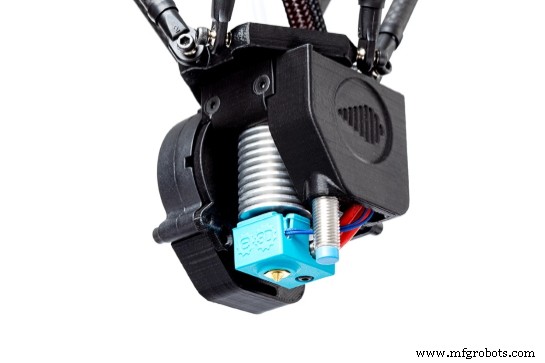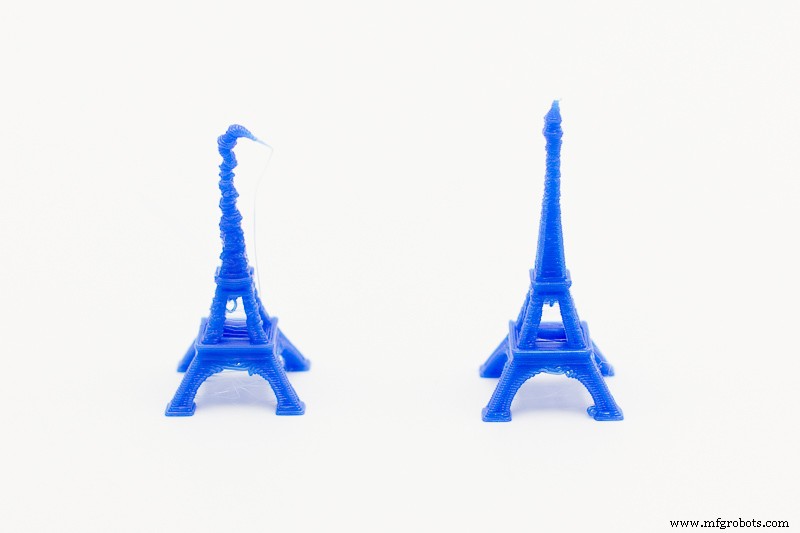Het belang van de laagwaaier

Als we het hebben over de functionele onderdelen van een FDM 3D-printer, is de laagwaaier een van de belangrijkste componenten dat is te vinden. Een 3D-printer heeft meestal twee ventilatoren in het HotEnd-gebied, een die verantwoordelijk is voor het koelen van de HotEnd-diffusor en een andere die het materiaal koelt dat uit het mondstuk komt. In dit artikel zullen we het hebben over de laatste, de laagventilator.
Wanneer is het nodig
Alle gebruikers hebben geprobeerd een onderdeel te printen met kleine zones, waarbij de spuitmond constant in dezelfde zone beweegt, een proces dat eenovermatige temperatuur veroorzaakt waardoor het onderdeel zachter wordt. Hetzelfde gebeurt bij het printen van hoge, slanke onderdelen, zoals een cilinder met een kleine diameter, waar warmte zich ophoopt in hetzelfde gebied en het onderdeel catastrofaal vervormt. Een andere typische vervorming is die welke optreedt bij zeer steile uitkragingen, waar het nog hete materiaal wordt vervormd doordat het in de lucht hangt, totdat het stolt.
Al deze problemen zijn opgelost gewoon door de laagwaaier te gebruiken correct.

Afbeelding 1:Kleine onderdelen zonder en met laagwaaier.
Compatibele materialen
Alvorens commentaar te geven op het configureren van de laagventilator, moet de gebruiker rekening houden met welke materialen het wordt aanbevolen om de laagventilator te gebruiken en met welke niet.
PLA
De PLA is het materiaal bij uitstek dat de laagventilator nodig heeft , vanwege het lage verwekingspunt. Dit betekent dat als het mondstuk gedurende korte tijd in hetzelfde gebied wordt geplaatst, het stuk onomkeerbaar zal vervormen. Om deze reden is de laagventilator een cruciaal onderdeel in alle FDM 3D-printers die PLA of een ander composietmateriaal gebruiken dat dit polymeer als basis bevat.
ABS
This material and similar ones, such as ASA, are totally incompatible with the layer fan . This is because the ABS is very sensitive to the loss of temperature against drafts, such sharp increases that cause cracking (delamination of the layers) and the total failure of printing. For this reason, it is vital to use ABS and ASA with fully closed 3D printers.
Others
Apart from the materials discussed above, in 3D FDM printing there are many more types of filaments and each with a different print configuration, for that reason a table with the majority of available materials is shown below and it is indicated if they need or no layer fan:
| Material | Layer fan |
|---|---|
| PLA | Yes |
| ABS | No |
| Flexible | Yes |
| HiPS | No |
| PETG | Yes |
| Nylon | No |
| ASA | No |
| PC | No |
| PP | Yes |
| PVA | Yes |




